Exclusive: Access, Connectivity and Inclusion—How UNICEF Leverages Blockchain to Close the Digital Divide
Christina Lomazzo is the Blockchain Lead for UNICEF’s Office of Innovation; whose work mainly involves leading the blockchain efforts at UNICEF Ventures where she heads up a diverse team of six. Together they invest in early technology prototypes that they assess and determine could have an exponential impact on UNICEF’s operations and ability to fulfill its mission across the developing world.

The United Nations Children’s Fund (UNICEF) was created in 1946 to provide relief to children in countries devastated by World War II. After the effects of the war were no longer a priority, the fund directed its efforts toward general programs for the improvement of children’s welfare, particularly in less-developed countries and in various emergency situations.
Christina Lomazzo is the Blockchain Lead for UNICEF’s Office of Innovation; whose work mainly involves leading the blockchain efforts at UNICEF Ventures where she heads up a diverse team of six. Together they invest in early technology prototypes that they assess and determine could have an exponential impact on UNICEF’s operations and ability to fulfill its mission across the developing world.
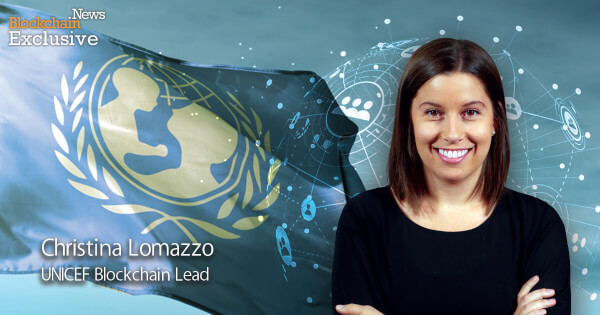
Prior to joining UNICEF, Lomazzo worked with the Bank of Canada where she was first introduced to the concept of Bitcoin. She went on to head up Deloitte’s blockchain practice in Canada, as it pertained to the public sector and wrote her master’s thesis on how global banks were responding to blockchain, a subject she has taught at various universities in Canada and the US.
We were fortunate enough to catch up with Lomazzo and the UNICEF Blockchain Team for some exclusive insights into a few of their ongoing projects including: how they support the recipients of UNICEF’s Innovation fund, what the team learned establishing blockchain infrastructure in Kazakhstan, and why they made the decision to accept Bitcoin and Ether cryptocurrency donations.
Innovation, Assistance and Education
The Office of Innovation at UNICEF is, “About doing new things to solve problems and improve the lives of children around the world,” said Lomazzo, “We look at exponential technologies and how they will have an impact on the way that UNICEF operates. We look at things like drones, XR, VR, data science and, most recently, blockchain; the goal is to prepare the organization for possible futures that we may encounter.”
For the unfamiliar, blockchain is a nascent technology that was originally created to support Bitcoin and cryptocurrency. In the simplest terms, a blockchain can be described as a data structure that holds transactional records while ensuring security, transparency, and decentralization. As its name suggests it is a chain of blocks—records of information that cannot be altered or controlled by any single authority. As UNICEF’s team recognized, the applications for blockchain go far beyond just cryptocurrency.
Lomazzo describes her team’s three main modes of exploring blockchain—investing in technology solutions; assisting UNICEF Country Offices in their blockchain projects; and educating the next generation. She explained “We have a venture fund where we invest in early-stage startups and we’ve made a total of seven blockchain investments to date. As UNICEF operates in over 190 different countries, we will also assist those UNICEF Country Offices in their initiatives and pursuit of harnessing the benefits of blockchain.” Lomazzo added, “We also have a pillar around educating the next generation, through a series called Surge, where we do learning events and hackathons and bring different skills to young people around blockchain while also introducing them to its potential.”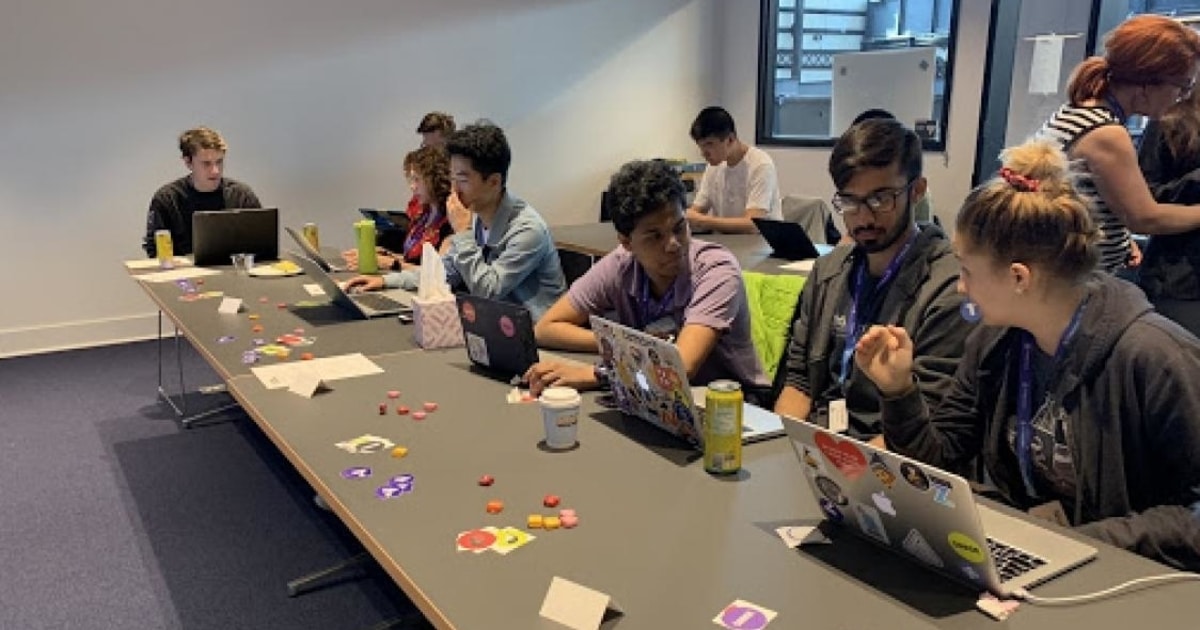
Source: UNICEF Office of Innovation - Surge Learning Event
Supporting Local Innovation for Local Solutions
UNICEF’s Innovation Fund is the first of its kind within the UN and offers financial support of up to $100,000 USD, as well as technical advice and mentorship, to worthy startups that are innovating to improve the world through open-source technology. Lomazzo explained, “There are different ways to actually explore how these new exponential technologies may have an impact on UNICEF and one of those ways is through a venture fund, because it actually widens the amount of exposure that we have to the tech.”
UNICEF does not take any equity away from these startups and exclusively invests in open-source projects, that are based in UNICEF program countries. Lomazzo said, “These projects are typically in emerging or developing economies—the thing that is so fantastic is that they are building solutions for local challenges.”
According to Lomazzo, one of the difficulties within the tech space is the assumption that new technology built in places like San Francisco or New York will automatically translate to every single geography’s needs, which she asserts is “absolutely not the case.” She said:
“Open source software can reach the most people and the beneficiaries of our venture fund are solving local challenges which will also have a greater impact. When you start building for those who are in low connectivity areas, or those who are not literate—those types of tech applications will also work in developed economies.”
Investing in these startup tech projects also helps UNICEF get a better view on what some of the local challenges are, as well as what some of the local solutions could be. Lomazzo said, “It allows us to prepare ourselves as an organization and consider how we could take some of the solutions to these smaller local challenges and apply them at a larger scale when similar challenges arise globally.”
First Six Startups Onboard
In December 2018, the UNICEF Ventures Team made their first investment into a cohort of six startup companies all of which were working on different blockchains and use cases.
Throughout 2019: Atix Labs (Argentina); Onesmart (Mexico); Precrypto (Mexico); Statwig (India); W3 Engineers (Bangladesh), and Utopixar (Tunisia) have received financial and advisory support from the UNICEF Innovation team. These six startups were selected from over 300 applications and flown to New York in January 2019 for an intensive one-week UNICEF onboarding.
Lomazzo said, “We had a group from UNICEF Innovation, and external mentors who were in New York, put them through an accelerated one week program of design thinking—to familiarize them with the blockchain tech stack, open-source principles, and the Principles for Digital Development, which we follow at UNICEF.”
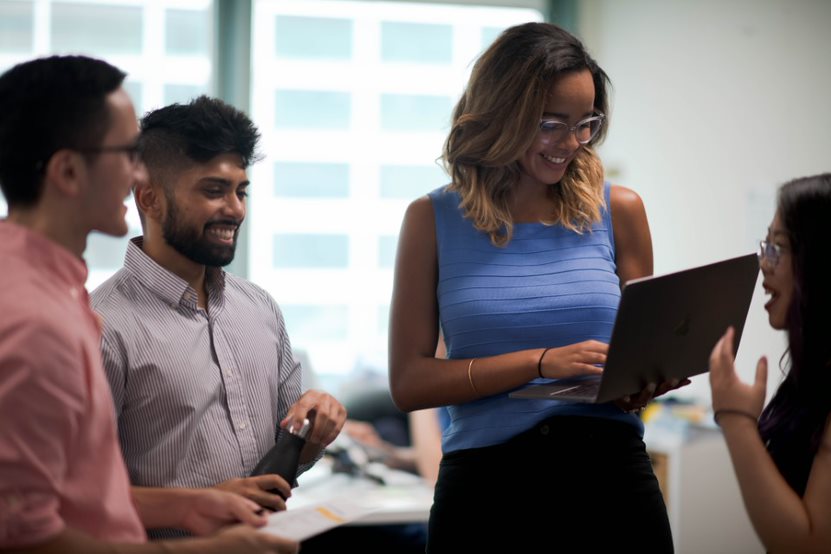
Source: UNICEF Office of Innovation - Venture Fund Onboarding
Following the first week, the formal mentorship process begins, Lomazzo explained, “On a monthly basis, our team meets with those startups. In the beginning, we set specific goals and over the 12 months, they need to reach the milestones that we have agreed upon. We help by providing them with different mentors throughout the process—business mentors, open-source mentors, and of course, technology mentors. If they encounter any challenges, we'll connect them with specific mentors as it relates to their issue.” She added, “Towards the end of their year with us, we also help the startups find follow on investment if that’s what they are looking for.”
Cryptocurrency for Financial Inclusion?
In October 2019, UNICEF launched a cryptocurrency denominated fund which allowed them to distribute, hold, and receive cryptocurrency donations in both Ether and Bitcoin—setting a precedent within the UN. The setup of the fund to support open-source investment was a two-year process and required collaboration across the entire organization.
There were two main drivers, according to Lomazzo, for the move towards cryptocurrencies. “One is we're already living in a digitally financed future—if you look at different economies, for example Kenya, 50% of the nation’s GDP flows through M-Pesa. Countries are moving towards a digitally financed future and cryptocurrency is one version of that potential future.” She added, “The other is that we had a lot of interest from donors who wanted to donate in cryptocurrency.”
Beyond another way to accept donations, Lomazzo said, “The two things that we really wanted to leverage in terms of having a crypto fund was being able to increase the transparency of how our funding is moving, as well as increase the efficiency with which we are able to distribute the funds. Crypto can move faster than going through any intermediary bank—which is another hypothesis that we're looking to test. This is a prototype crypto fund for UNICEF, we don't have all the answers and we're looking to learn.”
Cryptocurrency and digital assets have been promoted as a means to greater financial inclusion for the world’s unbanked as well as a more efficient means of cross-border money remittance. While Lomazzo agrees on the potential of the technology as a new form of finance, she said, “I don't think cryptocurrency automatically solves the issue of greater financial inclusion and just because we have cryptocurrency doesn't mean things like rules and regulations disappear.” Lomazzo explained:
“When we particularly think of financial inclusion, we typically think of the unbanked and one of the main reasons that individuals are unbanked is because they don't have a formal type of identity, which then excludes them from the banking system—cryptocurrency doesn't automatically fix that. What we need to keep in mind is to build applications that consider these types of barriers, like having no identification, and get creative with identity solutions so that we can bring these people into this new financial system.”
Closing the Digital Divide
Project Connect started out of a need that was expressed by many UNICEF partners and UNICEF Country Offices, which was the need to know where schools are and how connected they are to information around education, health, and emergencies.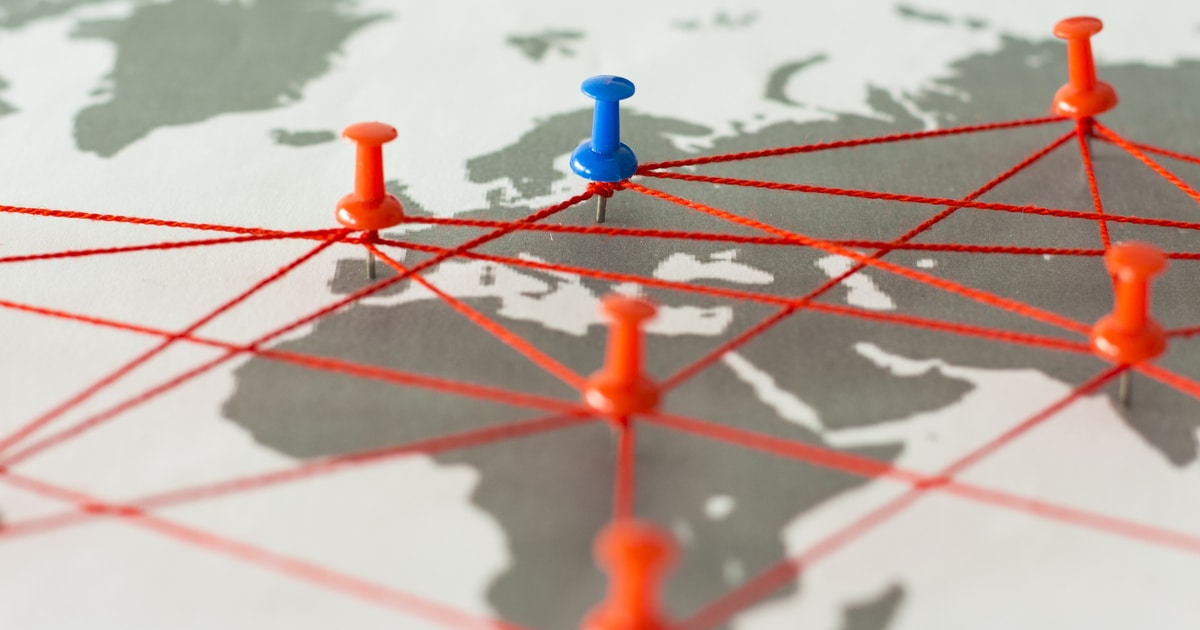
Project Connect is actually part of a much larger UNICEF and ITU collaboration project called Giga, which aims at bringing the power of meaningful connectivity to fast track young people's access to educational resources and opportunities. Lomazzo explained, “The project has now expanded to bringing connectivity to communities.” She said, “Because if you don't have connectivity, you don't have access to information about health care or online education and the opportunities you otherwise would have if you had connectivity.”
Connectivity, as Lomazzo uses the term, basically refers to the region’s access to the internet. The lack of access to the internet, for many disconnected schools and communities, means exclusion from the wealth of information available online—which means fewer resources to learn and to grow, as well as limited opportunities for some of the most vulnerable children and youth. UNICEF refers to this lack of connectivity between these remote communities and the rest of the world as the ‘digital divide’. Closing the digital divide requires global cooperation, leadership, and innovation in finance and technology.
Giga serves as a platform capable of creating the infrastructure necessary to provide digital connectivity to an entire country, for every community, and for every citizen. Lomazzo said, “Giga helps create the connectivity and then provides these communities with the tools to use it.”
“Particularly as it relates to blockchain and how we're looking at Project Connect— it’s really around doing the management and monitoring the internet speeds in schools. Eventually, in a more expanded view for Project Connect, we could have crypto donations coming in, you would then be able to see on the map—red dots, yellow dots, green dots, depending on the level of connectivity. You could see a red dot turn to a green dot when connectivity is paid for; you would then see the daily internet speed of that school with all of it being recorded on the blockchain.” Lomazzo explained, “You could then even have a smart contract actually manage some of the relationships with an internet service provider, for example. So, you have an end to end system, and that's very transparent and accountable.”
Digitizing Financial Processes in Kazakhstan
UNICEF Kazakhstan recently completed the first phase testing of a prototype blockchain platform called Digicus. The platform is designed to digitize financial processes, leveraging blockchain technology, to simulate business rules and the release of funds in a streamlined and transparent way to UNICEF’s partner organizations.
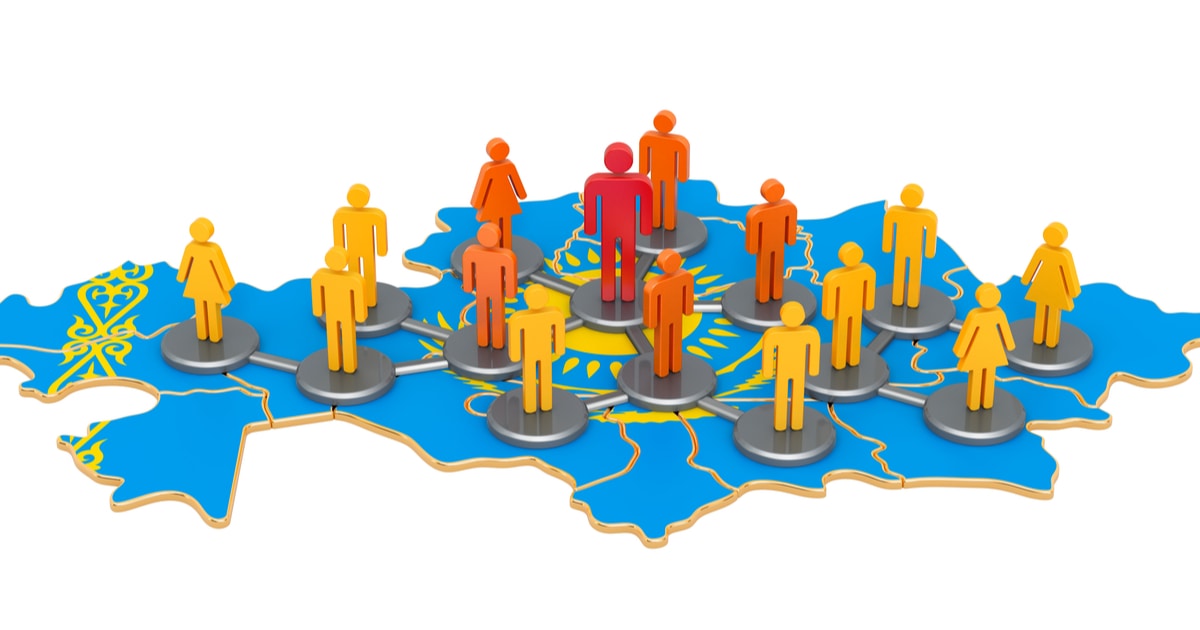
The project began after UNICEF held a hackathon in Kazakhstan in 2018. The hackathon was regarding smart contracts and how they could be used for internal efficiency within UNICEF. Building on that idea, UNICEF Kazakhstan became interested in creating a prototype to test a series of hypotheses around smart contracts and continue to explore whether they could potentially decrease banking fees for transactions and improve efficiency. Lomazzo said, “So just like start-ups can apply to our venture fund, so can our Country Offices, and so UNICEF Kazakhstan applied to our venture fund to build the first prototype.”
It took about six months of collaboration between the Office of Innovation and UNICEF Kazakhstan to build the prototype. Lomazzo said, “In the first phase, we were able to confirm all of their hypotheses on digitizing financial processes—with the exception of one, which was just around confirming the reduction in fees, and this was just because we did it on a test network and not on the network. But otherwise, it provided a lot of great learning for all the teams involved and has since been approved to move into phase two."
Digicus appears to be meeting expectations but there have been some challenges to overcome along the way. Lomazzo shared, “Specifically with localization, this was really around language. In Kazakhstan, most of the partners that we work with are Russian speaking and so the platform had to be developed in a way that was bilingual, easily accessible in both English and Russian.”
UNICEF Innovating for the Future
As the interview reached its conclusion, we asked Lomazzo what was on the horizon for the Office of Innovation and if the COVID-19 pandemic had altered their roadmap for 2020. She said, “Our team will be focused on continuing to build on the work we have done in terms of our venture fund, the crypto fund and supporting their country offices—in the next month or so we'll be launching a new call for blockchain applications. And so, for startups in UNICEF program countries who are interested and want to be part of our investment cohort, there will be an opportunity, and we will be supporting that in 2020. And of course, there is phase two of the Digicus project.”
In terms of the COVID pandemic and how it may have slowed down any of UNICEF’s plans, Lomazzo pointed to the work of Giga and Project Connect and countered, "The timelines for these projects have greatly accelerated based on the urgent global need for connectivity. As you can imagine, with the pandemic, people needing access to the internet and while they're at home—access to education, and access to health care information, and so our team is very dedicated to accelerating that work through 2020.”
Image source: Shutterstock